How is a spruce different from a Christmas tree?
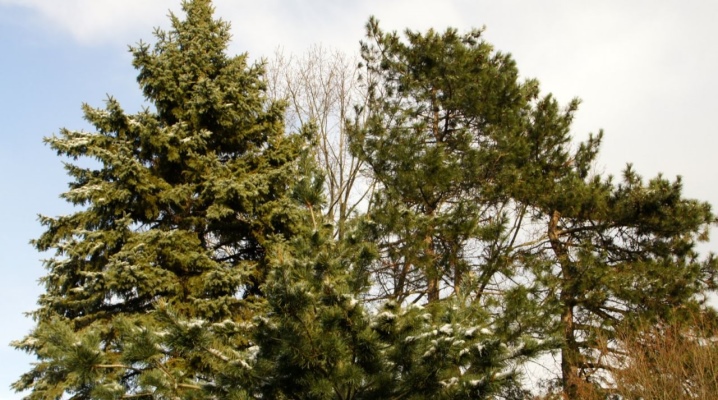
A tree and a spruce are not always the same. A Christmas tree is a collective household term denoting both an artificial product resembling a Christmas tree and a real spruce brought from the forest where it grew. Also Christmas trees are celebrations during the New Year and Christmas holidays. In a broad sense, a tree is a coniferous tree dressed up for the New Year. (it can be not only spruce, but also pine or fir). Outwardly, such a tree is not much different from the spruce growing in nature - except for the height and size of the needles.
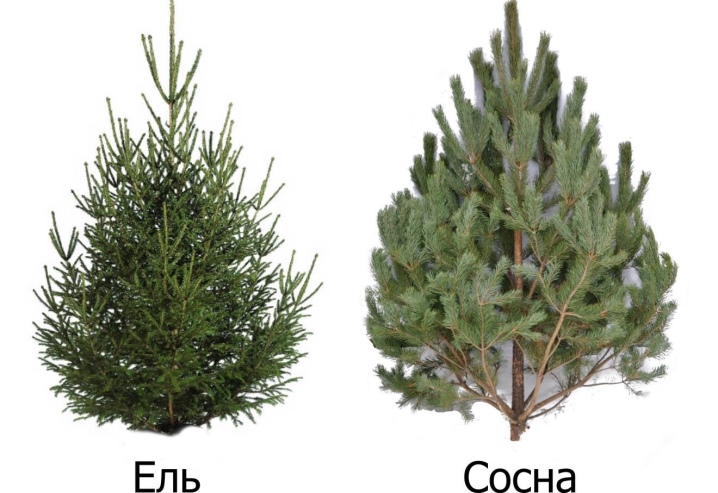
What is a real spruce?
Spruce means a tree belonging to the spruce genus and to the pine family. Today, botanists know at least 40 of its species. Spruce often becomes the subject of interest of poachers. Young trees that have reached at least a height of 2-2.5 m are massively cut down on New Year's Eve. If the tree is not felled, its height reaches 50 meters or more by the end of its life.
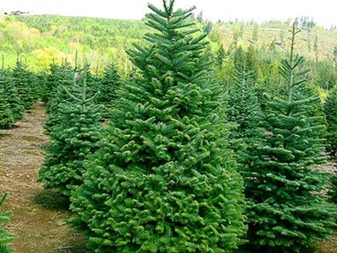
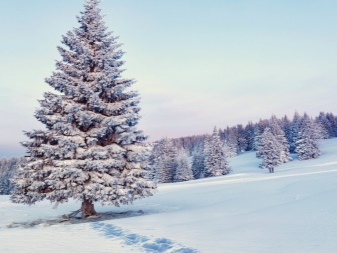
The classic shape of the tree is a cone. The branches are either horizontal or drooping, lowered to the ground, converge in 3 or more in one place.
This arrangement of branches of botany is called whorled. But sometimes these branches are connected in a ring-like manner. In the first 15 years of life, the spruce grows extremely reluctantly. What can not be said about its brother - pine: that, on the contrary, actively grows precisely in the first 25 years of life, after which it sharply slows down the growth rate. However, in the subsequent period of its life (from 15 to 70 years), the spruce "gains" the growth and width of the branches.
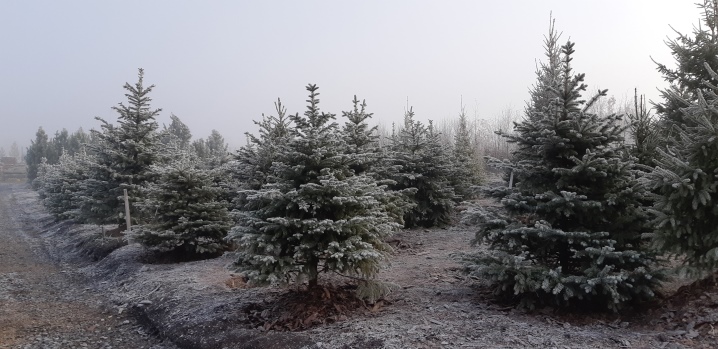
Norway spruce
In Russia and a number of European countries, common spruce is most common. Trees of this species grow at a certain height above sea level (marks 500-1600 m). The range of common spruce is the Alps, Pyrenees, Carpathians or Balkans. Common spruce does not have a well-developed main root - after the first few years of life, it dies off, but the plant itself continues to live at the expense of near-surface lateral roots, actively growing in different directions from the base of the trunk.
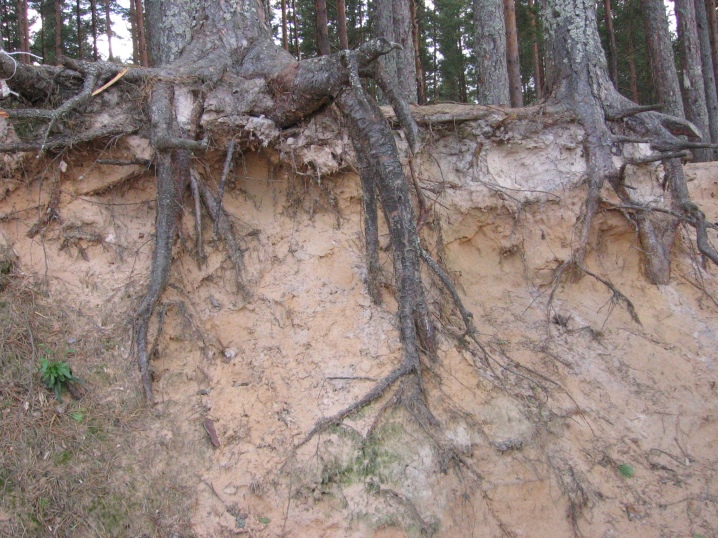
The bark of the tree has a gray tint. Modified foliage - pine needles are attached to each branch in a spiral. Each needle with 4 relatively regular edges is shortened. In the absence of severe frosts and heat, the spruce renews its needles only once every 6 years. The common spruce is a monoecious plant: the cones begin to secrete pollen in May. This species is characterized by both self-pollination and cross-pollination by wind or with the help of insects.
After the autumn ripening in the cones, the seeds reach a size of 4 mm.
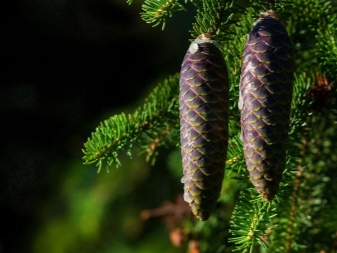
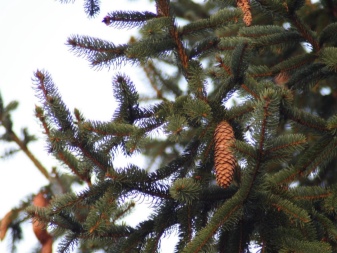
They fall either during the winter or in the spring and remain viable for the next few years. An ordinary forest spruce is not afraid of gloomy and diffused light. It easily takes root under the crowns of pines or deciduous trees in a mixed forest or taiga. The tree can grow in swampy and podzolic soils - but it can also be planted in black soil. In the taiga, pine and common Christmas trees are the main forest-forming tree species.
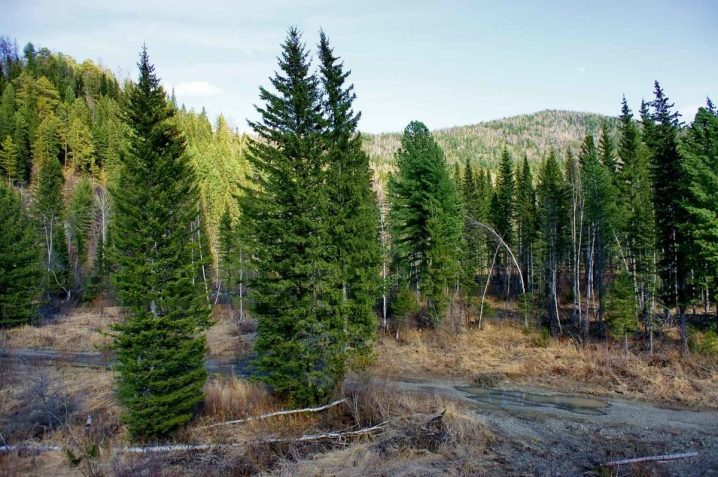
Types and lifespan
In addition to the common one, Siberian, eastern (grows in the mountains of the Caucasus and Transcaucasia), white, ayan, Glenn (lives in Japan and Sakhalin) and Canadian spruce are widespread. Any of the species does not tolerate a hot (equatorial, tropical) climate - the tree would simply burn out in the sun.
The lifespan of a specimen of each species is 250-500 years. Such a long period is achieved only in a real forest or forest belts, planted by man in places far from roads and major highways and railways. The record holder is in Sweden - this is a tree that, according to scientists, is 9550 years old.

How can you tell a pine from a spruce?
Simply put, a tree is a small fir tree. But often a pine tree is also called a tree - although this definition is incorrect.
And if you are thinking of decorating the New Year holidays with such an attribute as a Christmas tree, all 4 trees, including fir and even cedar, are equally good.
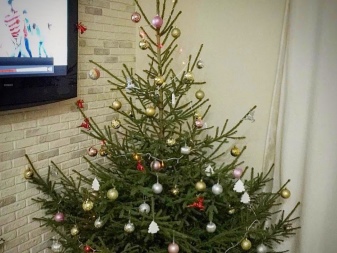
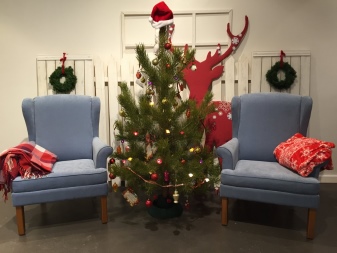
At the same time, the difference between pine and spruce species is much more significant than the similarity.
- Pine has a more resinous and dense wood than spruce. Its strength properties allow craftsmen to make a choice in terms of finishing in favor of pine. Due to the higher resin content, pine boards and beams are more durable. Due to the looser wood, spruce has better heat and sound insulation, reduced weight.
- The smell of pine is much more intense than that of spruce. Pine wood is easier to impregnate with fire-fighting agents than spruce.
- In pine trees, unlike spruce trees, the taproot does not die off, giving new lateral shoots at a greater depth. Therefore, the pine tree can not even be watered - it can easily reach the roots of the first aquifer (depth from 3 m). And during the season there will be at least one downpour. But the spruce will painfully perceive drought or swampy soil, its lifespan can be reduced several times.
- Pine is preferred for timber supporting structures and exterior finishes. Its wood grain is darker than that of spruce. Spruce is more suitable for interior work.
- Spruce is less susceptible to mold and mildew than pine.
- The spruce's needles are smaller than those of the pine.
- The pine cannot stand the shadow - it stretches towards the light, which is why its branches are raised. This is clearly seen in young pines, which are traded before the New Year holidays. Spruce, on the contrary, needs less direct sunlight and takes root under the crowns of pine trees. Russian spruce species even take the twilight for granted, gaining protection from both the wind and the excess of light. The lack of direct sunlight is due to their accelerated growth not immediately from the emergence of seedlings from seeds, but only after 15-20 years from the year of seed germination into a new shoot.
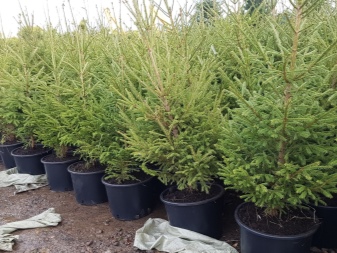

How to distinguish spruce from pine, see below.



































































The comment was sent successfully.